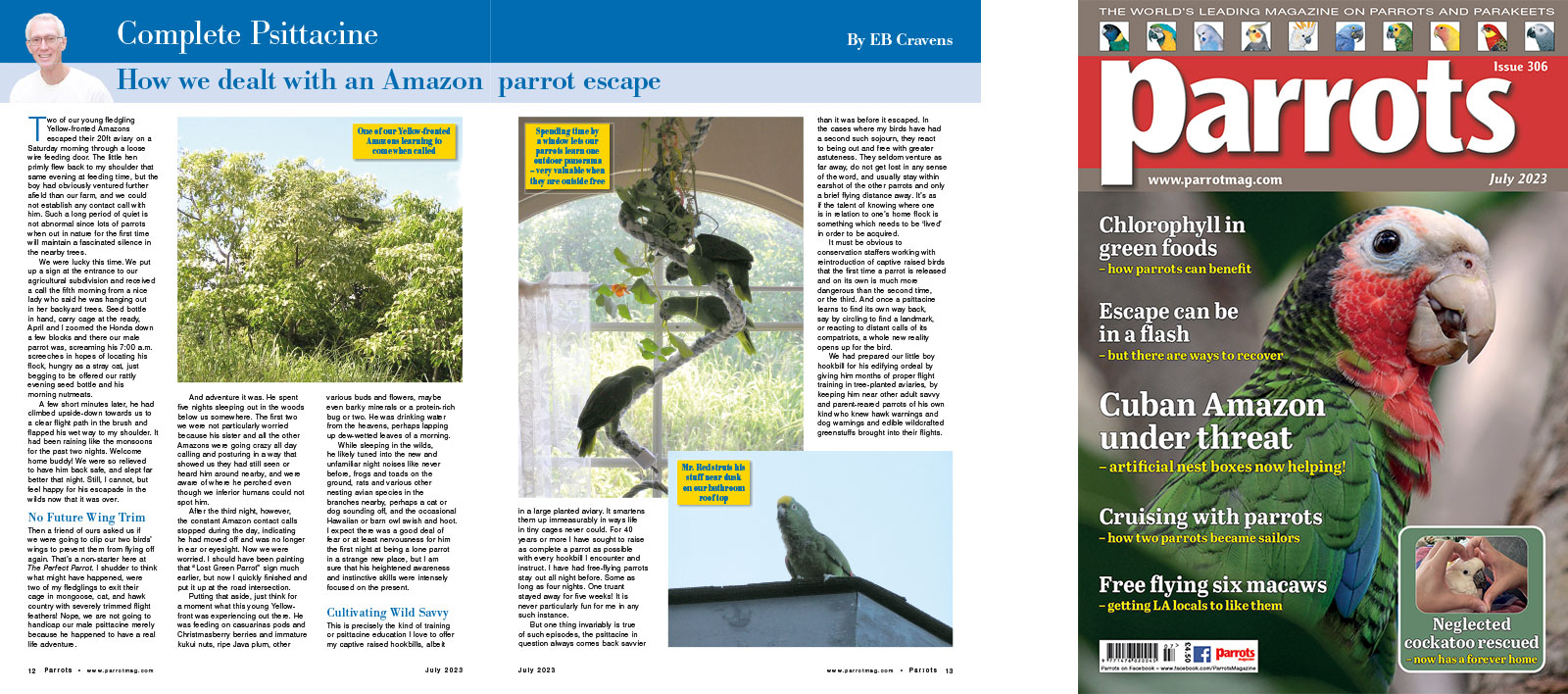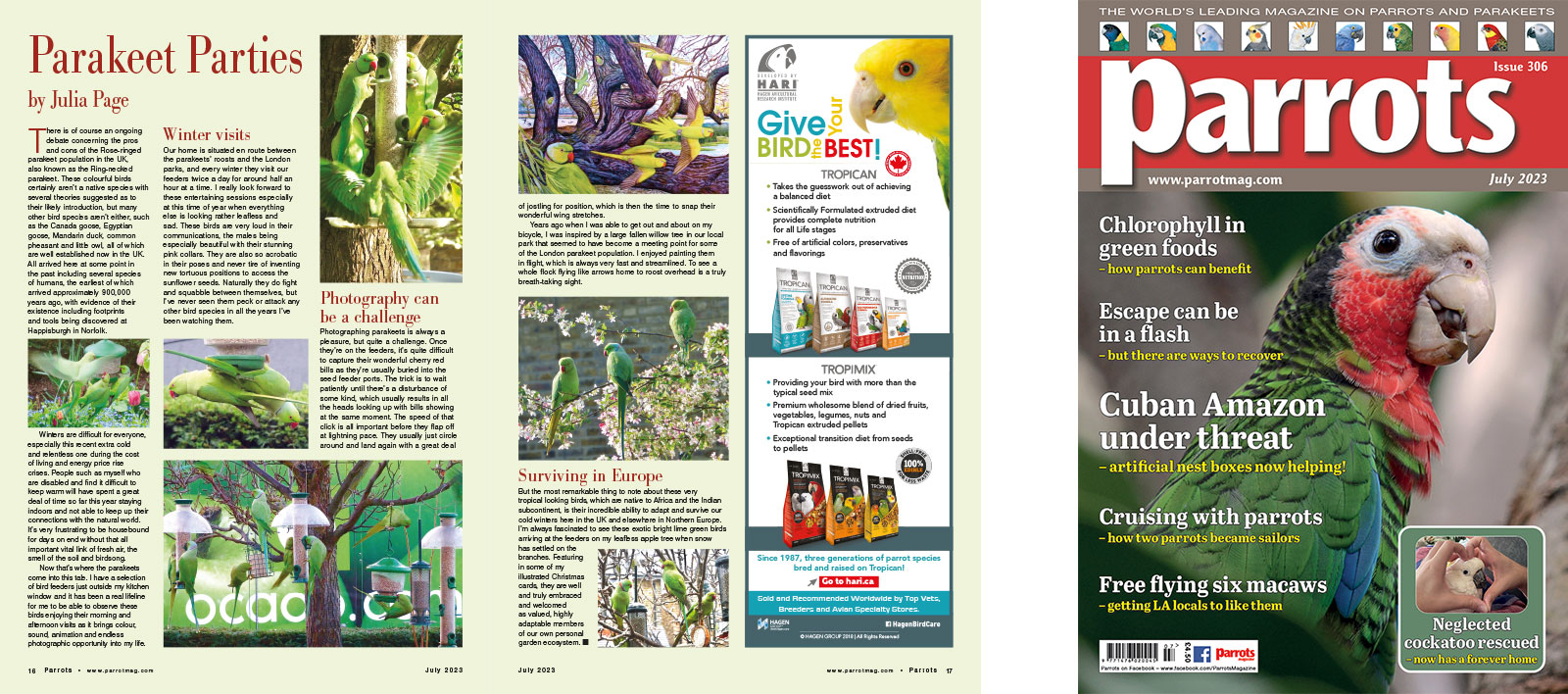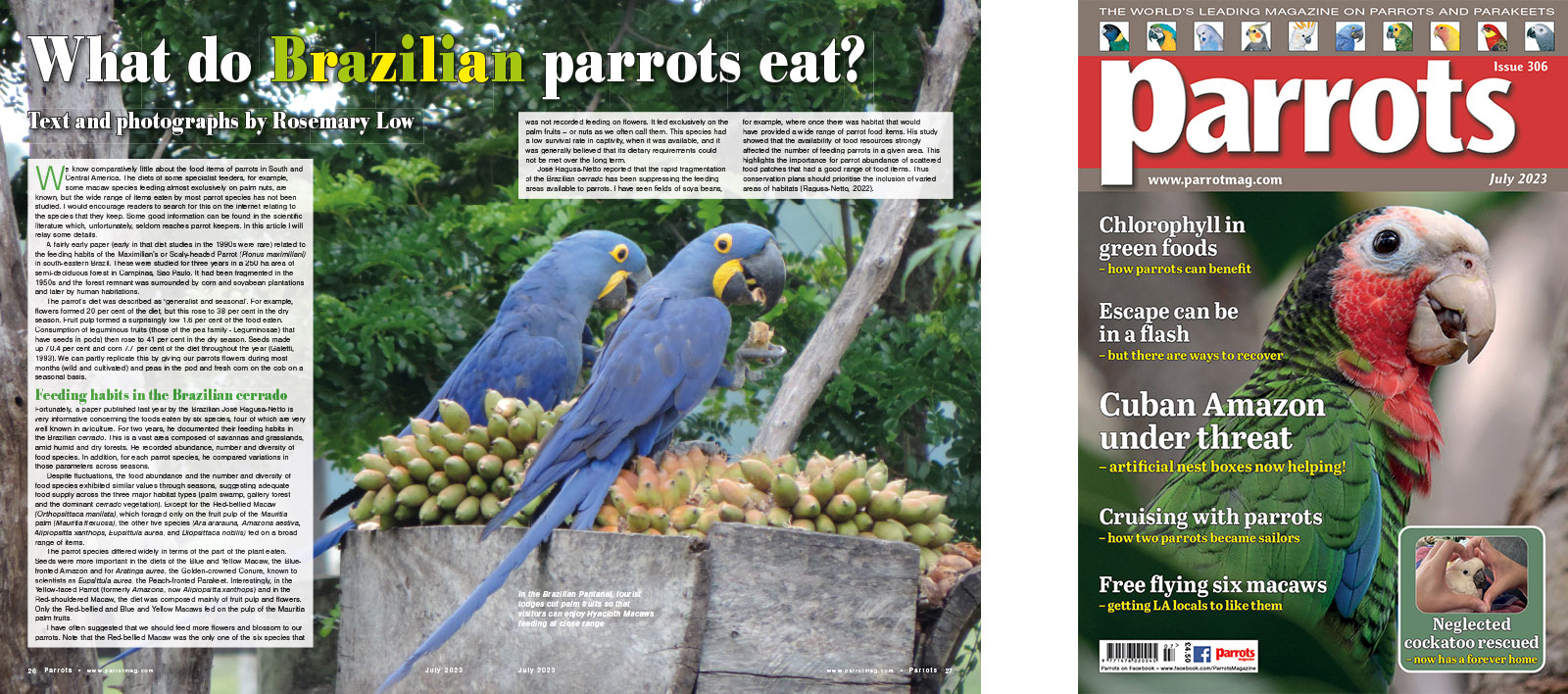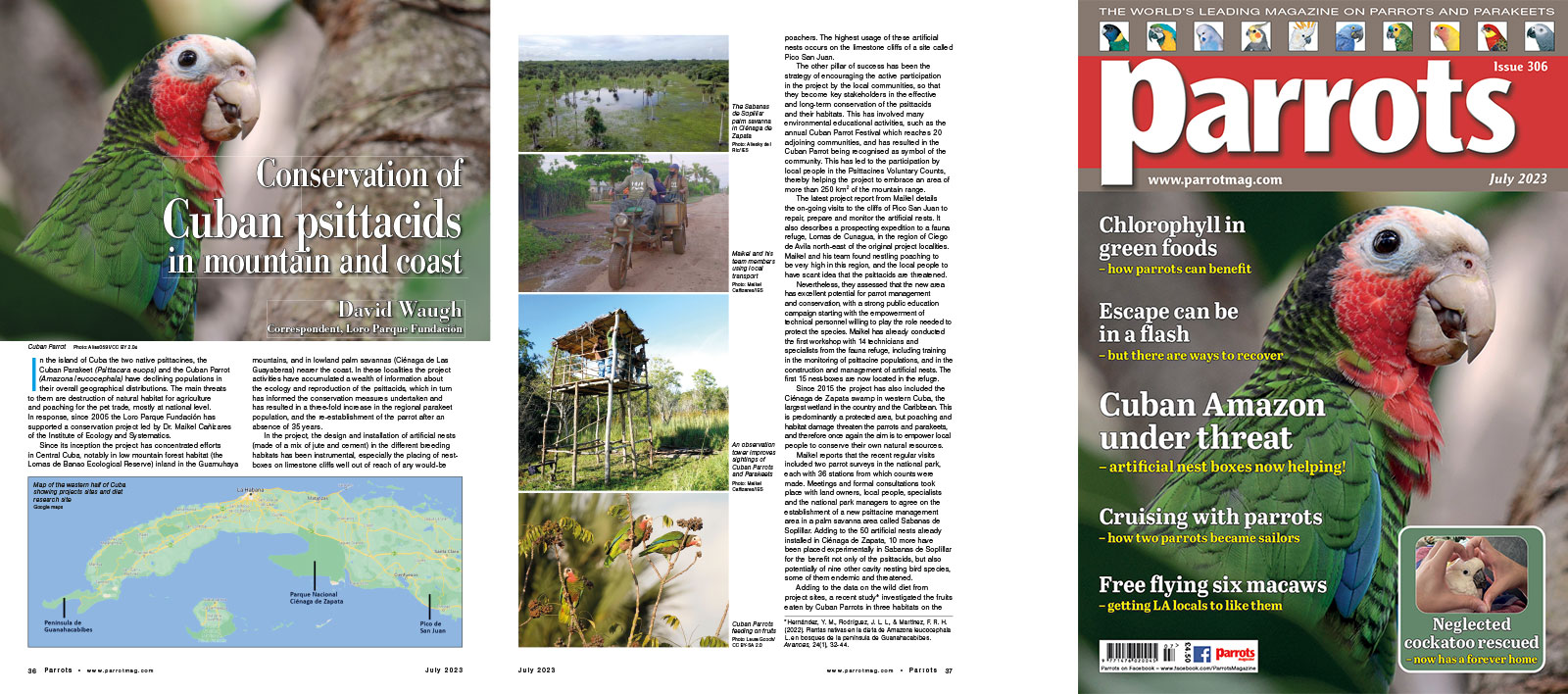
Complete Psittacine by Eb Cravens
Two of our young fledgling Yellow-fronted Amazons escaped their 20ft aviary on a Saturday morning through a loose wire feeding door. The little hen primly flew back to my shoulder that same evening at feeding time, but the boy had obviously ventured further afield than our farm, and we could not establish any contact call with him. Such a long period of quiet is not abnormal since lots of parrots when out in nature for the first time will maintain a fascinated silence in the nearby trees.
We were lucky this time. We put up a sign at the entrance to our agricultural subdivision and received a call the fifth morning from a nice lady who said he was hanging out in her backyard trees. Seed bottle in hand, carry cage at the ready, April and I zoomed the Honda down a few blocks and there our male parrot was, screaming his 7:00 a.m. screeches in hopes of locating his flock, hungry as a stray cat, just begging to be offered our rattly evening seed bottle and his morning nutmeats.
A few short minutes later, he had climbed upside-down towards us to a clear flight path in the brush and flapped his wet way to my shoulder. It had been raining like the monsoons for the past two nights. Welcome home buddy! We were so relieved to have him back safe, and slept far better that night. Still, I cannot, but feel happy for his escapade in the wilds now that it was over.
Buy Now!

by Julia Page
There is of course an ongoing debate concerning the pros and cons of the Rose-ringed parakeet population in the UK, also known as the Ring-necked parakeet. These colourful birds certainly aren’t a native species with several theories suggested as to their likely introduction, but many other bird species aren’t either, such as the Canada goose, Egyptian goose, Mandarin duck, common pheasant and little owl, all of which are well established now in the UK. All arrived here at some point in the past including several species of humans, the earliest of which arrived approximately 900,000 years ago, with evidence of their existence including footprints and tools being discovered at Happisburgh in Norfolk.
Winters are difficult for everyone, especially this recent extra cold and relentless one during the cost of living and energy price rise crises. People such as myself who are disabled and find it difficult to keep warm will have spent a great deal of time so far this year staying indoors and not able to keep up their connections with the natural world. It’s very frustrating to be housebound for days on end without that all important vital link of fresh air, the smell of the soil and birdsong.
Now that’s where the parakeets come into this tale. I have a selection of bird feeders just outside my kitchen window and it has been a real lifeline for me to be able to observe these birds enjoying their morning and afternoon visits as it brings colour, sound, animation and endless photographic opportunity into my life.
Buy Now!

By Rosemary Low
We know comparatively little about the food items of parrots in South and Central America. The diets of some specialist feeders, for example, some macaw species feeding almost exclusively on palm nuts, are known, but the wide range of items eaten by most parrot species has not been studied. I would encourage readers to search for this on the internet relating to the species that they keep. Some good information can be found in the scientific literature which, unfortunately, seldom reaches parrot keepers. In this article I will relay some details.
A fairly early paper (early in that diet studies in the 1990s were rare) related to the feeding habits of the Maximilian’s or Scaly-headed Parrot (Pionus maximiliani) in south-eastern Brazil. These were studied for three years in a 250 ha area of semi-deciduous forest in Campinas, Sao Paulo. It had been fragmented in the 1950s and the forest remnant was surrounded by corn and soyabean plantations and later by human habitations.
The parrot’s diet was described as ‘generalist and seasonal’. For example, flowers formed 20 per cent of the diet, but this rose to 38 per cent in the dry season. Fruit pulp formed a surprisingly low 1.6 per cent of the food eaten. Consumption of leguminous fruits (those of the pea family - Leguminosae) that have seeds in pods) then rose to 41 per cent in the dry season. Seeds made up 70.4 per cent and corn 7.7 per cent of the diet throughout the year (Galetti, 1993). We can partly replicate this by giving our parrots flowers during most months (wild and cultivated) and peas in the pod and fresh corn on the cob on a seasonal basis.
Buy Now!

David Waugh, Correspondent, Loro Parque Fundación
In the island of Cuba the two native psittacines, the Cuban Parakeet (Psittacara euops) and the Cuban Parrot (Amazona leucocephala) have declining populations in their overall geographical distributions. The main threats to them are destruction of natural habitat for agriculture and poaching for the pet trade, mostly at national level. In response, since 2005 the Loro Parque Fundación has supported a conservation project led by Dr. Maikel Cañizares of the Institute of Ecology and Systematics.
Since its inception the project has concentrated efforts in Central Cuba, notably in low mountain forest habitat (the Lomas de Banao Ecological Reserve) inland in the Guamuhaya mountains, and in lowland palm savannas (Ciénaga de Las Guayaberas) nearer the coast. In these localities the project activities have accumulated a wealth of information about the ecology and reproduction of the psittacids, which in turn has informed the conservation measures undertaken and has resulted in a three-fold increase in the regional parakeet population, and the re-establishment of the parrot after an absence of 35 years.
In the project, the design and installation of artificial nests (made of a mix of jute and cement) in the different breeding habitats has been instrumental, especially the placing of nest-boxes on limestone cliffs well out of reach of any would-be poachers. The highest usage of these artificial nests occurs on the limestone cliffs of a site called Pico San Juan.
Buy Now!




